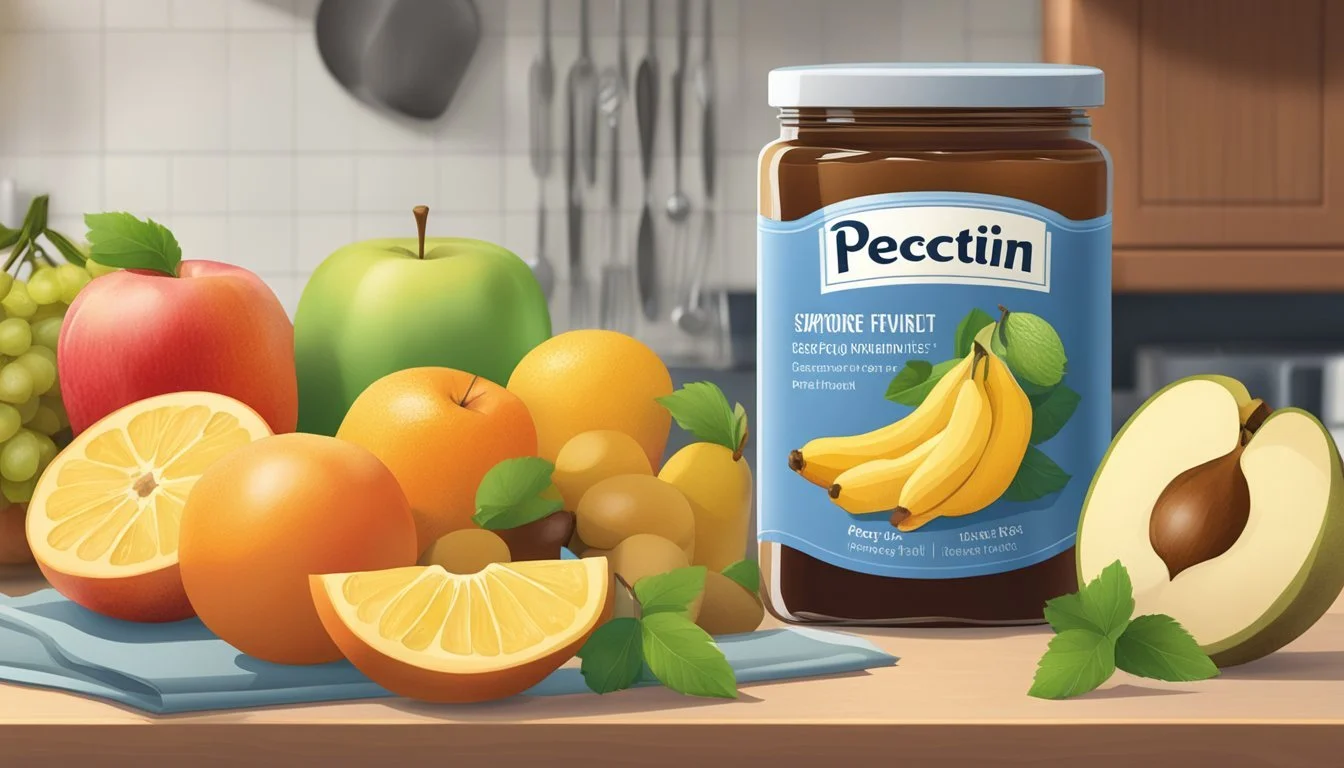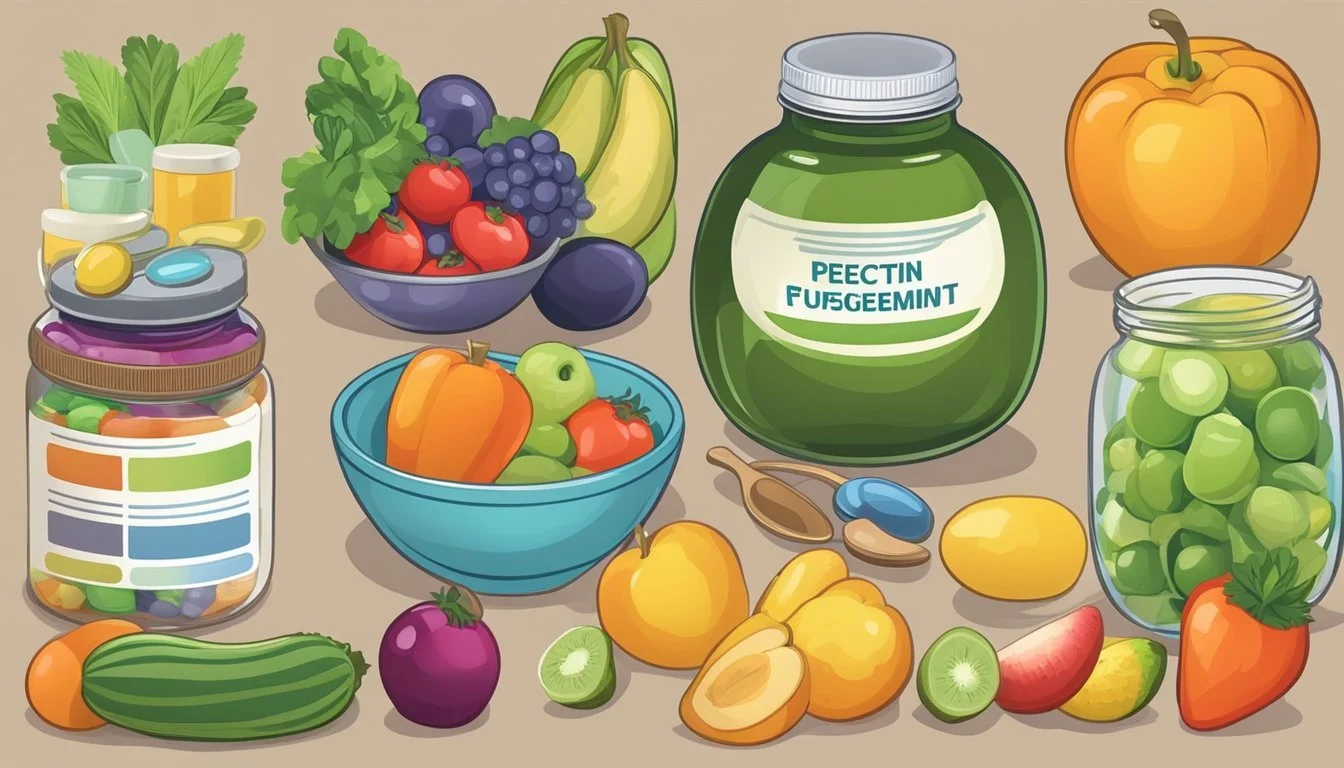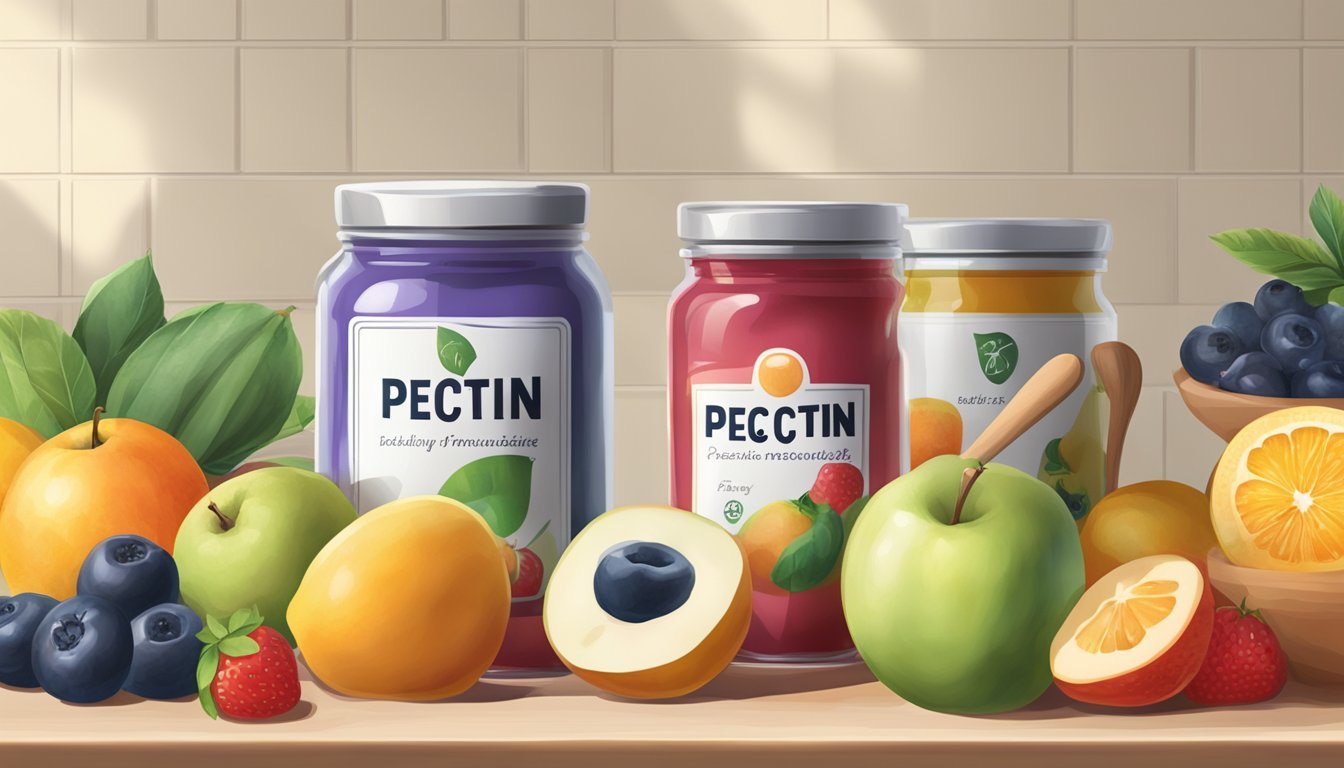How Long Does Pectin Last?
Shelf Life and Storage Insights
Pectin, a carbohydrate found in the cell walls of plants, is commonly used for its gelling properties in food preparation, such as making jams and jellies. It's the substance that gives fruits their structure, and when extracted, pectin is a key ingredient that helps preserves to set. Understanding the shelf life of pectin is important for both home cooks and professional chefs to ensure the quality and consistency of their culinary creations.
The duration that pectin remains effective is influenced by several factors, including the type (liquid or powdered), the condition in which it's stored, and its exposure to elements like heat and moisture. Typically, pectin can last up to two years when stored in a cool, dry place. However, once the pectin is opened, it should ideally be used within 6 to 12 months for best results.
Over time, the gelling efficacy of pectin can diminish. This doesn't typically pose a food safety issue but rather a quality concern since pectin past its expiration date may result in a final product that doesn't set correctly. To evaluate the potency of pectin, especially when uncertainty arises, conducting a gelling test before use can save time and resources that might otherwise be wasted on an unsuccessful batch.
Understanding Pectin
Pectin is a polysaccharide, a type of soluble fiber commonly found in the cell walls of fruits and vegetables. This substance is particularly abundant in citrus peel and the cores of apples, which are often used in its commercial production. Pectin's role in cooking is essential, especially in the creation of jam, jelly, and other preserves, as it helps to create a gel consistency.
Key Properties:
Solubility: Pectin is water-soluble, allowing it to disperse easily in wet environments.
Gelling Ability: In the presence of sugar and acid, pectin can form a gel-like structure, which is crucial for jam and jelly making.
Source: The primary commercial source of pectin is citrus peel, but it can also be derived from other fruit sources.
Dietary Benefits:
Prebiotic Function: As a soluble fiber, pectin may have prebiotic effects, promoting the growth of beneficial bacteria in the gut.
Fiber Content: Its fiber content contributes to overall dietary fiber intake, supporting digestive health.
Utilization in Cooking:
Jam and Jelly: Pectin interacts with sugar and acid to set these spreads into a firm, spreadable form.
Fruit Gels: Beyond preserves, it's also used to thicken various fruit gels and desserts.
Types of Pectin
Pectin is widely utilized in food production for its gelling properties, which vary between types. Selecting the appropriate pectin is essential, based on its interaction with sugar, acid, and the intended gel strength.
High Methoxyl Pectin
High methoxyl (HM) pectin requires a high sugar content and acidic conditions to form a gel. Its gelling temperature is typically higher, and it is ideal for traditional jams and jellies where the presence of sugar and acid is sufficient to ensure a strong gel.
Low Methoxyl Pectin
In contrast, low methoxyl (LM) pectin gels in the presence of calcium, not sugar, allowing for lower-sugar recipes. The gel strength and gelling temperature of LM pectin can vary, depending on the amount of calcium added during the process.
Amidated Pectin
Amidated pectin is a type of LM pectin that has been chemically altered to introduce amide groups. This modifies the gelling properties, creating a more controlled and less brittle gel, which is forgiving of varied calcium and sugar levels.
Modified Citrus Pectin
Modified citrus pectin (MCP) is altered to have a shorter chain length, making it more easily absorbed by the body. While MCP is not primarily used for gelling purposes, it is of interest in dietary supplements and health-related applications.
Pectin's Role in Food
Pectin is a natural carbohydrate that exerts a profound influence on the textural properties and shelf life of various food items. Its application ranges from being a gelling agent in jam and jelly preparation to offering dietary fiber in health-conscious recipes.
Jam and Jelly Making
Pectin is integral to the production of jams and jellies, where it acts as a thickener to achieve the desired consistency. Recipes for these spreads typically combine fruit, sugar, and pectin, heating the mixture until it reaches gelation -- a process where pectin's unique properties enable the transformation of liquid fruit mixtures into spreadable forms.
Food Texture and Stability
The addition of pectin to foods can enhance texture and stability. It is commonly used in yogurts, desserts, and some beverages to improve mouthfeel and prevent the separation of ingredients. As a stabilizer, it helps maintain an even distribution of elements within a mixture, ensuring consistency in both taste and appearance.
Low-Sugar and Dietary Options
Pectin also allows for the creation of low-sugar recipes since it can gel without the need for large amounts of sugar, unlike certain other thickening agents. This property is particularly beneficial for those monitoring their sugar intake. Furthermore, as it is a form of dietary fiber, it lends a prebiotic effect, supporting the growth of beneficial bacteria in the gut.
Food Preservation
Lastly, pectin plays a role in food preservation. By gelling and thickening, it creates a barrier to air and bacteria, which can extend the shelf life of food products. This not only applies to homemade preserves but also to various commercially produced food items where longevity is crucial.
Factors Affecting Gelation
When considering the gelation process of pectin, several key factors play crucial roles in determining the final gelling properties. These factors include:
pH Levels: The acidity of the solution is essential, as pectin requires an acidic environment to gel properly. Typically, a pH range of 2.8 to 3.5 is optimal for gel formation.
Sugar Content: Sugar acts as a gelling agent by drawing out water from the pectin, thus promoting the gelling process. It is not only the presence of sugar that is important but also its concentration within the mixture.
Fruit Presence: Naturally occurring acids and pectin are present in fruit, which can contribute to the gelling process. Fruit type and ripeness can affect the amount and type of pectin and acid present, thereby influencing gelation.
Temperature: Heat is applied to dissolve pectin and to release acids from fruits, which then help pectin to set. However, excessive heat can break down pectin, reducing its gelling ability.
Degree of Esterification: Pectin molecules can be categorized based on their degree of esterification (DE). High-ester pectins require more sugar and less acid to gel, while low-ester pectins need the opposite.
Molecular Weight: Pectin with higher molecular weight typically forms stronger gels.
The gelation behavior of pectin can be represented with the following table:
Factor Role in Gelation Note pH Triggers pectin to gel Optimal range: 2.8 to 3.5 Sugar Enhances water extraction and gel strength Requires correct concentration Fruit Acids and Pectin Contributes to acidity and pectin content Varies with fruit type/ripeness Temperature Facilitates acid release and pectin dissolution Too high can degrade pectin Degree of Esterification (DE) Determines sugar and acid needs for gelation High-DE and low-DE pectins differ Molecular Weight Affects gel strength Higher weight means stronger gels
Understanding these factors ensures that anyone can achieve the desired gelling properties when working with pectin.
Storage and Shelf Life
Pectin, essential for jam and jelly making, requires proper storage to maintain its gelling ability. Its longevity largely depends on whether it’s in liquid or dry form and how it’s stored.
Optimal Storage Conditions
For dry pectin, a cool, dry place away from direct sunlight is ideal. These conditions help maintain its quality and prevent degradation. Liquid pectin, meanwhile, benefits from refrigeration, especially after opening, to preserve its effectiveness.
Dry Pectin: Store in pantry at room temperature.
Liquid Pectin: Refrigerate after opening.
Shelf Life Indicators
The expiration date is a critical indicator of pectin's viability. For best results, one should use pectin before this date. If past the expiration, dry pectin might still work but with less reliability, whereas liquid pectin is less forgiving and should be discarded to avoid runny preserves.
Check expiration date before use.
Inspect for changes in color or odor.
Liquid Pectin vs. Dry Pectin
Shelf life varies between liquid and dry pectin. Unopened, dry pectin can last up to 2 years, while liquid pectin typically has a shorter shelf life. Once opened, both forms are best used within 6-12 months. They are not interchangeable due to their different compositions and reactions with sugar.
Dry Pectin: Up to 2 years unopened.
Liquid Pectin: Best used within 6-12 months after opening.
Health Benefits and Dietary Importance
Pectin, primarily recognized for its soluble fiber content, plays a significant role in maintaining gut health and offering multiple health benefits. As a form of dietary fiber, pectin can aid in relieving constipation by increasing water absorption in the colon, thus improving bowel movements.
The intake of pectin has been associated with lowering cholesterol levels. The soluble fiber in pectin binds with cholesterol, aiding in its removal from the body, which may contribute to reduced risk of heart disease.
In regards to type 2 diabetes, pectin's property to slow down glucose absorption can help in stabilizing blood sugar levels. This may be particularly beneficial for managing diabetes and improving insulin sensitivity.
Here is how pectin impacts various health aspects:
Obesity: May promote satiety, leading to reduced food intake.
Gut Bacteria: Functions as a prebiotic, nurturing beneficial gut bacteria.
Inflammation: Its prebiotic effects can also mitigate inflammation in the gastrointestinal tract.
Regular incorporation of pectin into one's diet can support overall digestive wellness, since it provides a conducive environment for the proliferation of healthy gut bacteria. Moreover, a well-balanced gut microbiota is crucial for immune system function and may play a role in preventing obesity. Pectin's ability to increase satiety can be quite advantageous for weight management strategies, as it helps individuals feel full for longer periods.
Commercial Pectin Use
Commercial pectin, a gelling agent widely used in jam and jelly making, is available in different forms including Certo (liquid pectin) and Sure-Jell (powdered pectin). Manufacturers package these products with the intention of them being shelf-stable and ready-to-use for consumers looking to craft homemade preserves with a consistent texture.
In terms of storage and longevity, unopened packages of commercial pectin can typically last up to two years if they are kept in a cool, dry environment. Once the package is opened, the pectin's potency begins to decline; therefore, it is recommended to use it within six to twelve months to ensure the best gelling results.
Sure-Jell and Certo are popular brands that offer pectin in both dry and liquid forms. It's crucial to follow the manufacturer's instructions on the package, as each type has distinct properties and cannot be exchanged one-for-one in recipes.
Pectin Type Expected Shelf Life Unopened Opened Shelf Life Storage Recommendation Dry Pectin Up to 2 years Use within 6-12 months Cool, dry place Liquid Pectin Up to 2 years Use immediately after opening Refrigerate after use
When using expired pectin, there is no food safety concern, but there may be a decrease in gelling effectiveness, resulting in a less-than-ideal texture for jams or jellies. It's always preferable to check the expiration date and adhere to the manufacturer's guidelines to ensure the quality and success of the preserved products.
Homemade Pectin
Homemade pectin is a natural gelling agent derived from fruits high in pectin, such as apples and various citrus peels like lemons, grapefruit, and oranges. The process of making pectin at home involves extracting this substance through cooking and then using it to thicken homemade jams and jellies.
Ingredients for Homemade Pectin from Apples:
High-pectin apples (e.g., green apples)
Water
Instructions:
Chop apples into pieces, including the cores and peels, as these parts contain high pectin levels.
Place the chopped apples into a pot, and cover them with water.
Simmer over low heat until the apples are thoroughly cooked and the liquid becomes syrupy.
Strain the mixture through a cheesecloth or fine sieve to extract the liquid pectin.
Homemade Citrus Pectin:
Utilizing the high pectin content in citrus peels, one can prepare pectin by:
Gathering citrus peels from lemons, grapefruit, or oranges.
Boiling these peels in water.
Allowing the mixture to soak overnight.
Straining the mixture to separate the liquid pectin.
In creating homemade jams with this pectin, the general guideline is to use approximately 4-6 tablespoons of homemade pectin per cup of mashed fruit. The sweetness level can be adjusted based on personal preference, often involving a combination of sugar and sugar substitutes.
Storing homemade pectin should be done with care. It can be refrigerated for immediate use or preserved for long-term storage. When properly canned and sealed, homemade pectin has a generous shelf life, although it is recommended to use it within a year to ensure the best quality of your homemade jams.
Pectin in Diets and Supplements
Pectin is commonly recognized for its role in the food industry as a gelling agent, notably in jams and jellies. It is a type of dietary fiber found primarily in the cell walls of fruits and is particularly abundant in apples and citrus peels. Not only is pectin used for its texture-enhancing properties, but it also serves a functional role in human diets and various supplements.
In diets, pectin is classified as a soluble fiber and can have prebiotic effects, meaning it supports the growth of beneficial bacteria in the gut. This contributes to overall gut health and may aid in digestion. The inclusion of pectin-rich foods supports this component of dietary needs.
As a supplement, pectin is available in various forms including capsules, powders, and gels. It's often included in fiber supplements to help maintain digestive health. Furthermore, pectin may also be used in specialty supplements where low-methoxyl pectin can be employed due to its ability to form gels without the presence of sugar, which can be beneficial in specific dietary applications.
Here is a simple guide to understanding key points about pectin in diets and supplements:
Pectin as Prebiotic:
Feeds beneficial gut bacteria.
Improves gut health and digestion.
Pectin as Supplement:
Found in powder, capsule, and gel forms.
Promotes digestive health as a soluble fiber source.
Low-Methoxyl Pectin:
Requires less sugar to form gels.
Suited for sugar-restricted diets.
Inclusion of pectin in diets is generally considered safe and beneficial due to its fiber content. Individuals interested in enhancing their fiber intake or seeking the digestive benefits of this soluble fiber may consider both dietary sources of pectin and supplementary forms.
Pectin's Interaction with Other Ingredient
When preparing jams and jellies, understanding the role of pectin and its interaction with other ingredients is crucial to achieve the desired consistency. Pectin, a natural thickening agent, requires the presence of both sugar and acid to activate its gelling properties effectively.
Sugar: It is intrinsic to the gelling process, as it combines with pectin and acid to form a network that traps the fruit juice, creating the gel structure. Notably, the type and quantity of sugar can vary but must be balanced to ensure proper setting.
Acid: Acidic conditions are necessary for pectin to form a gel. Many fruits have natural acids which contribute to the gelling process. If the fruit is low in acid, adding an acid such as lemon juice can aid in achieving the right pH for gelling.
Calcium: Some types of pectin, specifically low-methoxyl pectins, require calcium ions to form a gel. The concentration of calcium can significantly influence the strength and quality of the gel.
Fruits: The pectin content varies among different fruits. High-pectin fruits like apples and citrus can gel on their own, while low-pectin fruits might need added pectin.
Here is a simple illustration of the necessary ratios for jam making:
Ingredient High-Pectin Fruits Low-Pectin Fruits Fruit 1 part 1 part Sugar 1 part 1 part Added Pectin Optional Required Acid If needed Likely needed
For an ideal gel structure, the ingredients must be accurately measured and the cooking instructions precisely followed. Failure to do so can result in jams and jellies that are either too runny or excessively firm.
Pectin in Health Research
Recent studies spotlight pectin, a dietary fiber, for its role in modulating gut health and potential immune system benefits. Research indicates that pectin may positively impact various allergic diseases, including asthma, food allergies, and atopic dermatitis.
Modified Citrus Pectin (MCP), a specific form of pectin, has been studied for its interaction with galectin-3, a protein implicated in many pathophysiological processes. MCP's ability to bind to galectin-3 suggests its potential for therapeutic applications in conditions associated with this protein.
The influence of pectin on cholesterol levels has also been a subject of interest. Its mechanism, involving the alteration of lipid metabolism and interference with bile acid absorption, contributes to its cholesterol-lowering effect. Additionally, pectin's role in glucose absorption has been noted. Through its gel-forming properties in the gastrointestinal tract, it can slow glucose absorption, which may assist in managing blood sugar levels.
Aspect of Health Potential Benefit of Pectin Allergic Diseases Modulates immune response Cholesterol Levels Reduces absorption Glucose Absorption Slows down entry to bloodstream
Researchers are examining pectin's prebiotic characteristics and its potential as an adjunct in allergy prevention and treatment strategies. The complex interaction between dietary fibers like pectin and the gut microbiota stands as a promising field of investigation, with implications for overall well-being and disease prevention.










